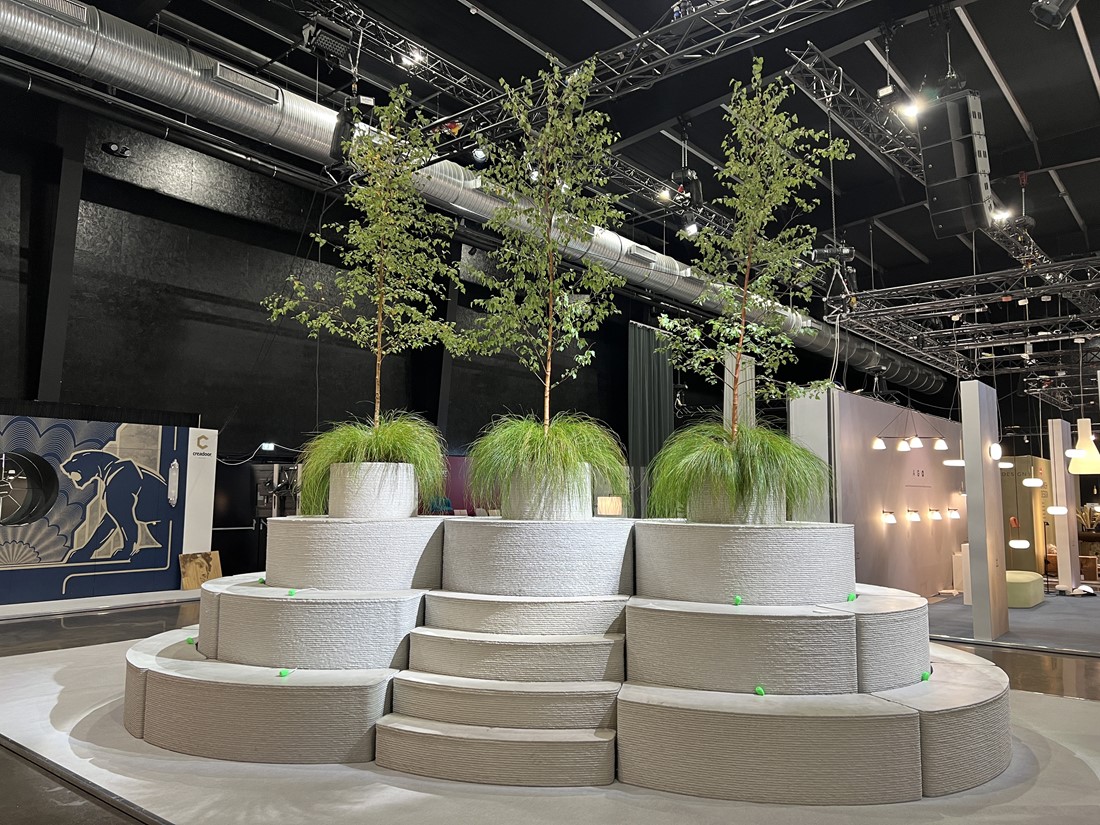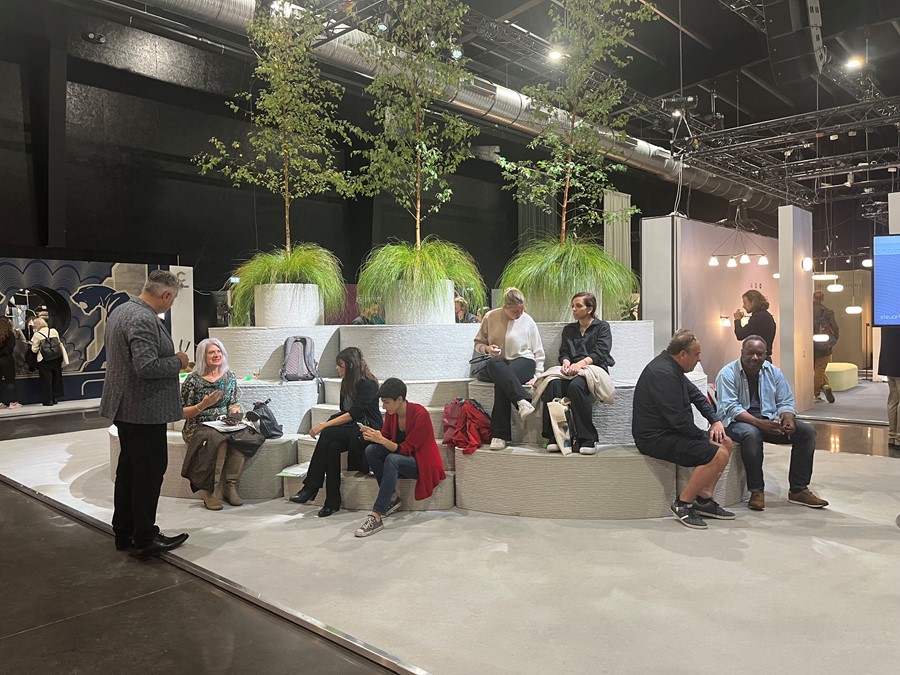A playful 3D printed oasis showcases the potential of graphene-enriched cement free mortar
Materials science meets design and sustainability at Design London 2022: Versarien and designer Steuart Padwick display a low-carbon artwork.
Graphene Flagship Partner Versarien together with award-winning designer and artist Steuart Padwick has created a 3D printed installation made of 100% cement free mortar enhanced by graphene. This innovative material is strong, reduces the carbon footprint by as much as 35% when compared with concrete, and cures quickly.
High quantities of CO2 are emitted when limestone and other ingredients are heated to about 1,480 degrees Celsius in the production of cement – the binding element of both traditional concrete and mortar. No cement was used to build Island Steps, as it was 3D printed using mortar enriched with Versarien’s graphene-enhanced admixture, CementeneTM, which boosts the strength and durability of mortar. The result is a sturdy, hollow structure, which can be constructed on-site or off-site and easily transported to its final location.
“I designed Island Steps, using Versarien’s advanced Graphene enriched 3D printed cement free concrete, to demonstrate the versatility, beauty and more importantly its extraordinary low carbon credentials. The possibilities for the design and construction industry are very exciting and an important part of our transition towards carbon neutral,” says Padwick, who is best known for Head Above Water on London’s South Bank, and COP26’s artwork, The Hope Sculpture Project, in Glasgow (UK).
Displayed at Design London 2022, Island Steps has been designed as a playful oasis where people can sit on round-shaped components. The entire structure was 3D printed in record time: it took around 40 minutes to print the biggest piece, while it would have required weeks or even months for a pre-cast equivalent, considering the time required for the mould to be made.
“Casting a product like this one in concrete would need a lot of different bespoke moulds, which can be expensive and time consuming to produce. This method removes the carbon footprint, cost and time associated with the making and disposing of the formwork itself, as well as saving a huge amount of material in comparison to a solid-cast equivalent,” highlights Ben Harries, Versarien’s architect and designer. “Architects are often reminded that ‘curves equal cost’. However, in the case of 3D printing, creating straight or curved shapes is equivalent.”
The same material and technology can be applied to other structures, such as the façade of buildings and other indoor or outdoor elements for landscape architecture. "This low carbon, cement-free mortar clearly demonstrates a transformation in the way we can think, design and construct our buildings and interior spaces in future,” adds Neill Ricketts, CEO of Graphene Flagship partner Versarien.
Kari Hjelt, Head of Innovation of the Graphene Flagship, comments: "Since the total buildings sector floor area is projected to double in the next 40 years, the construction industry will benefit from low-carbon solutions strengthened with graphene".

Island Steps was 3D printed using mortar enriched with Versarien’s graphene-enhanced admixture, CementeneTM, and displayed at Design London 2022 (Credit: Steuart Padwick).

People at Design London 2022 interact with Island Steps (Credit: Ben Harries).




